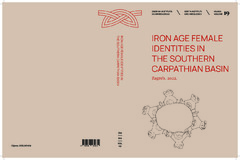Приказ основних података о документу
Womens role within the regional networks of interactions – Case study Vajuga – Pesak
| dc.creator | Kapuran, Aleksandar | |
| dc.date.accessioned | 2023-07-28T09:44:32Z | |
| dc.date.available | 2023-07-28T09:44:32Z | |
| dc.date.issued | 2022 | |
| dc.identifier.isbn | 978-953-6064-63-2 | |
| dc.identifier.uri | http://rai.ai.ac.rs/handle/123456789/537 | |
| dc.description.abstract | The Early Iron Age necropolises in the territory of Serbia are few and significantly underresearched. Therefore, the discovery of the Vajuga — Pesak necropolis represented an important step towards the understanding of the mutual relations between the prehistoric communities of the Danube region and the Central Balkans during the Iron Age 1. By analysing certain details regarding the burial ritual and the material culture, especially fibulae as one of the most prominent elements of the female costume, we’ll try to indicate the possible directions of cultural influences in the aforementioned territory during the Iron Age 1. We will primarily consider female individuals, as the bearers of those influences within populations, the bearers that were always associated with certain ethnic markers. | sr |
| dc.language.iso | en | sr |
| dc.publisher | Zagreb: Institut za arheologiju | sr |
| dc.relation | info:eu-repo/grantAgreement/MESTD/Basic Research (BR or ON)/177020/RS// | sr |
| dc.rights | openAccess | sr |
| dc.source | Iron Age Femail Identities in the Southern Carpathian Basin | sr |
| dc.subject | Early Iron Age | sr |
| dc.subject | Central Balkans | sr |
| dc.subject | necropolis | sr |
| dc.subject | costume | sr |
| dc.title | Womens role within the regional networks of interactions – Case study Vajuga – Pesak | sr |
| dc.type | article | sr |
| dc.rights.license | ARR | sr |
| dc.citation.epage | 171 | |
| dc.citation.spage | 158 | |
| dc.description.other | Zbornik Instituta za arheologiju = Serta instituti archaeologici ; knj. 19 | sr |
| dc.identifier.fulltext | http://rai.ai.ac.rs/bitstream/id/1386/bitstream_1386.pdf | |
| dc.identifier.rcub | https://hdl.handle.net/21.15107/rcub_rai_537 | |
| dc.type.version | publishedVersion | sr |


